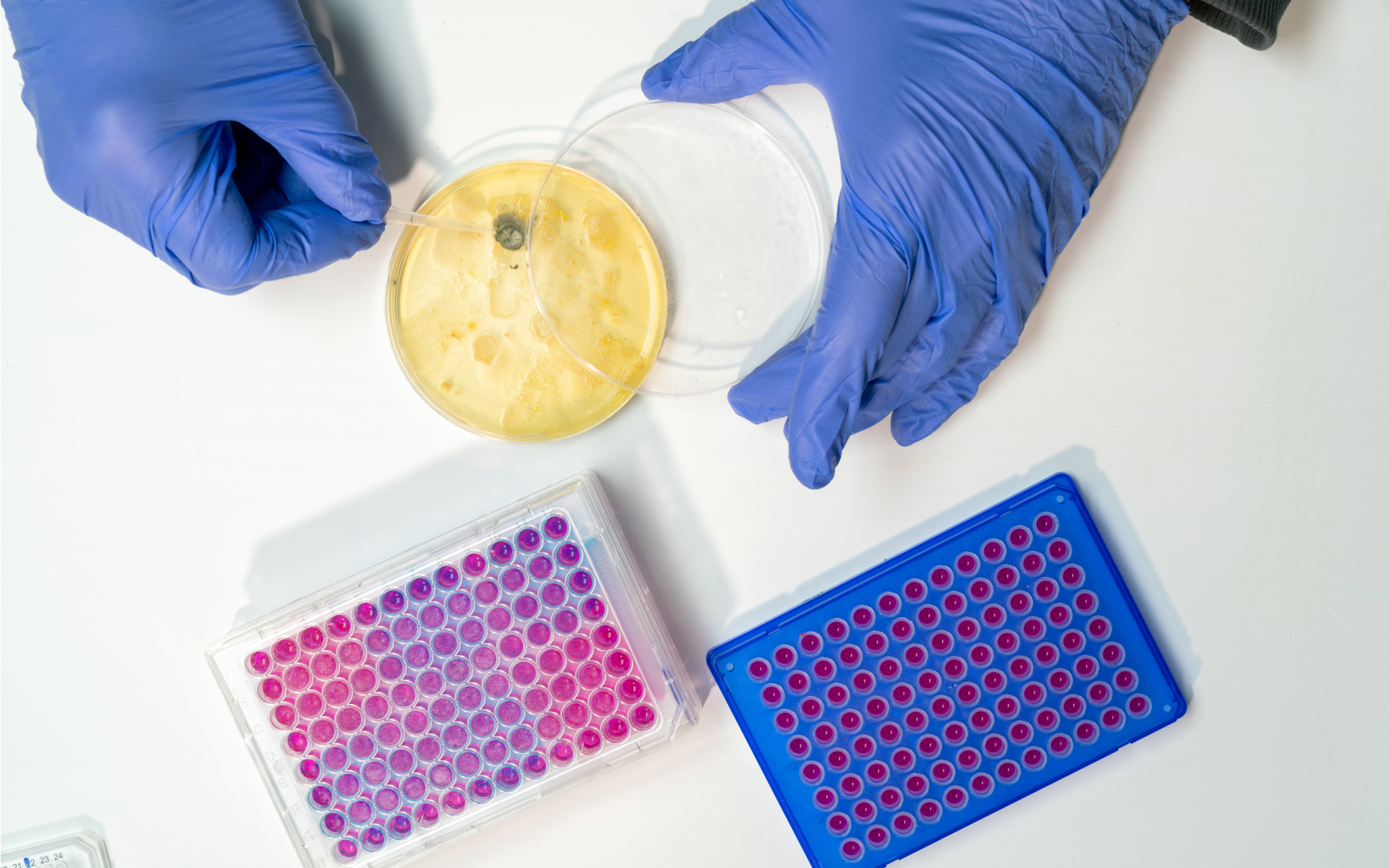Suppose you come to the doctor's office with a urinary tract infection. There is a good chance that you will be prescribed a course of antibiotics and will be back to normal after a few days. The use of antibiotics is a matter of course worldwide. Van Dongen explains that this self-evidence is not justified and even poses a major threat to public health.
Antibiotic resistance is the principle that a bacterium develops resistance to one or more antibiotics. “This means that they are no longer susceptible to the effects of those antibiotics,” says Van Dongen. “All micro-organisms can become resistant to the means we have developed to combat them. This not only concerns bacteria, but also viruses, fungi and yeasts, for example. That is why we talk about antimicrobial resistance (AMR).”
No alternative
In practice, having a condition caused by a resistant bacteria means that a prescribed antibiotic simply does not work. “The consequences of a urinary tract infection are still manageable. But in more serious conditions, such as a blood infection, it is very important that an antibiotic works.” It is possible for a bacterium to develop resistance to several or even all available antibiotics. In that case, as a doctor you no longer have any alternatives and there is a chance that the patient will die.
In addition, antibiotics are administered for prevention during medical interventions, such as operations or a caesarean section. “Take the caesarean section for example, if you are dealing with a resistant bacteria there is no way to protect the pregnant woman. A relatively safe medical procedure then becomes impossible to perform.”
Overusage
Resistance is a natural genetically determined characteristic that bacteria can develop. The genetic material with the resistance is passed on to the offspring during division. But resistance can also be acquired when bacteria take in pieces of genetic material with resistance. Resistance can therefore be naturally present, acquired from other bacteria or acquired from, for example, the environment.
Resistance is caused, among other things, by excessive use of antibiotics, by both people and animals. “In many countries, antibiotics are available at the drugstore or are easily prescribed. At the same time, large quantities of antibiotics end up in the environment through the discharge of waste water from hospitals, for example, and through the use of antibiotics in agriculture and livestock farming.” Contributing to this problem is that the same types of antibiotics necessary to combat infectious diseases in humans are widely used in the agricultural sector. “Antibiotics have a growth-promoting effect in animals and are cheap. This makes them an obvious tool in various developing countries. It is a trade-off between economic and medical interests.”
Abstract problem
Van Dongen states that AMR is now a bigger problem than the COVID pandemic, but that relatively little attention is being paid to it. “AMR is an abstract problem, it is much more difficult to understand. The COVID pandemic was very tangible and hit close to home. You could take a test and you were infected with the virus or not.” With AMR this is much more complicated. “You read in a death certificate that a patient dies of tuberculosis, but not that it concerns tuberculosis that can no longer be treated due to a resistant bacteria.” At the same time, the numbers do not lie and resistant bacteria are spreading rapidly. “A total of five million people die every year, directly or indirectly, from the consequences of AMR. This number is expected to rise to ten million deaths per year by 2050.”
Resistance control
According to Van Dongen, there are five important strategies to curb resistance: preventing infections, monitoring antibiotic use in humans and animals, developing new antibiotics and better diagnostics and reducing AMR in the environment. “We can do a lot to prevent infections through vaccination and hygiene measures. In addition, monitoring the use of antibiotics in humans and animals is important and we should give higher priority to the development of new antibiotics. Furthermore, it is important to reduce the amount of antibiotics in wastewater. Not only in production facilities, but also in hospitals, nursing homes and people's homes. Finally, we need to improve infection diagnostics. We must be able to quickly determine which infection and bacteria it is and what it is resistant to. Only then can you prescribe more targeted antibiotics.”
According to Van Dongen, everyone in society should take responsibility for contributing to the fight against resistance. “Not only doctors, pharmacists and veterinarians can do something, but also patients and healthy citizens. For example, you can take hygiene into account when preparing food and wash your hands regularly.”
